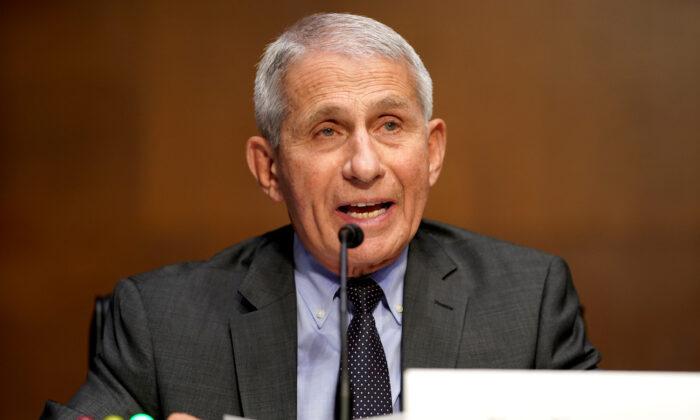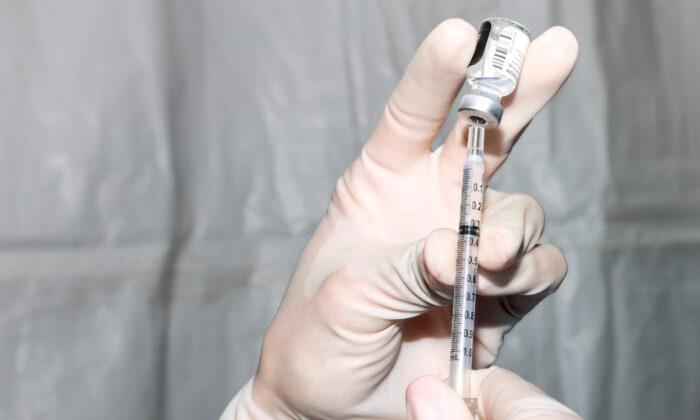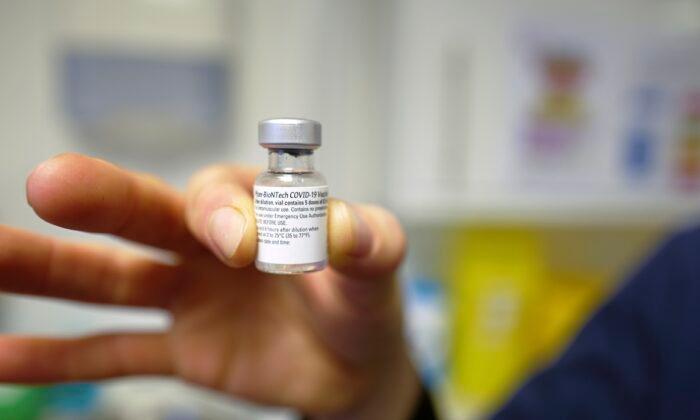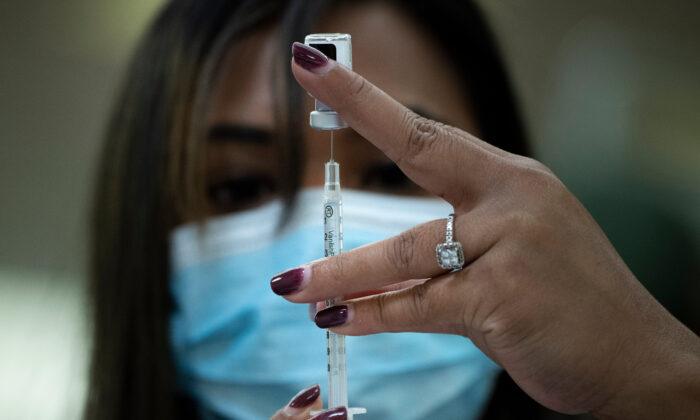We'll never recover our reputation for being a tough, brutally “Darwinian” city after you hear what goes on at the Wild Bird Fund, tucked behind a glass storefront on Columbus Avenue between 87th and 88th streets.
It’s astonishing.
Birds, all kinds of birds, from sparrows to seagulls, pigeons to falcons, to chickens, and even, for that matter, turtles, are brought in in boxes, injured, by New Yorkers, famed for being too rushed to notice anything but their iPhones, or their next meeting or date. Not true.
Not when an injured bird is spotted.
When I arrive, an attorney, “rehabber,” and friend of the Wild Bird Fund (WBF), Helen Lukievics, has arrived with a pigeon she expertly caught, near Wall St., and brought to the Upper West Side by taxi. Soon three medics (rehabbers) are bent over the bird, whose feet are a tangled mess, and will need to have a toe amputated. I am invited to watch, and we go downstairs.
Rita McMahon, WBF’s director, dressed in black slacks and T-shirt, with sparkling blue eyes welcomes me into the team, with trust. It feels like M.A.S.H, only for birds. Just an elemental, daily fight, under less than ideal conditions, to fix what is broken, ease pain, negotiate with life, against death, and when the fight is lost, to at least make death dignified, each creature assisted with love over the bridge.
McMahon must surely be the reigning Bird Whisperer of New York—she seems to know at first glance what the birds are suffering from. She can see from the hue of a pigeon’s foot or the pattern of shades on their feathers, what exactly is wrong. From lead poisoning to malnutrition, to broken bones, to a litany of other hazards—most of which are treatable.
But first you have to catch them. Helen is a pro.
“Oh it’s an acquired skill,” she said with a smile. “You should see me in Rome. My husband pretends he doesn’t know me.”
The WBF opened its doors in 2012, as New York’s first and only “wildlife rehabilitation and education center,” providing medical care, rehabilitation, surgery, detox and even physical therapy, to thousands of injured animals (mostly birds) a year.

Rita McMahon, Co-Founder and Director of the Wild Bird Fund, prepares to give a Canadian goose a bath on Aug. 28, 2014 (Samira Bouaou/Epoch Times)
Flyway
New York City, being on the North-South Atlantic flyway—a major migration path—is home to over 350 bird species, many stopping over in New York City on their way. For visiting birds, the expanding city is fraught with perils.
It all began about 10 years ago when Rita McMahon—formerly a television market research consultant—happened upon an injured wild goose on her way home from Connecticut. She took it to an animal hospital and paid out of pocket. It died the next day. “They knew nothing about birds,” McMahon said.
She had stumbled upon a huge void. New York City was the last major city in the United States not to have a wildlife rehabilitation center. She began treating and rehabilitating birds in her home, as did her friend, attorney Lukievics—once they were licensed to do so.
There were bird vets at the Center for Avian & Exotic Medicine, right across the street, which Rita and the other founders originally worked with, until they were able, after an “angel” donation, to open their own wildlife rehabilitation hospital.
Asked about some of the hazards for New York City’s birds, apart from the obvious ones, Rita says: “Hair extensions. That synthetic hair is so strong, it’s unbreakable. In some neighborhoods, this is becoming a huge problem for the birds. There’s also a repellent glue called Tanglefoot, that is supposed to be spread in a very thin layer on windowsills, but which people overuse.”
“They come in here just covered in it, immobilized,” she said. Birds also present frequently with lead poisoning, which requires weeks or even months of chelation therapy, respiratory infections, and of course, broken bones.
Bird Bigotry
I’m invited to witness the toe operation, and as we descend the stairs to the place where most of the birds are kept (waterfowl, complete with an eight foot pool, and the “nursery” of baby birds are upstairs) Helen, who loves pigeons, asks me to consider, in writing this, what I now call bird bigotry.
There are many kinds of wildlife here, and some of the birds are exotic and cherished. But pigeons are the main patient group. They rest in cages downstairs, their feet tagged with their names—the same as the name of the person who brought them in. They fly across the room, and the boys chase the girls in mating dances on the floor.
Helen warned me that pigeons—were I to emphasize them—could put people off, “ever since Woody Allen called them rats with wings.” (It was a character in “Stardust Memories” who said that.)
But then she started telling me, in tones of awe, why she loves them. “You know they dance. The males dance for the females—every time they see a female they start dancing. There was this male pigeon I will never forget. Well this guy, it was a snowstorm, a really bad snowstorm, and he was down by the Chelsea Pier, and he had no feet, just stumps, but he just started dancing this really wild dance for a female nearby him. It was as if he was saying, ‘Hey baby, come on, we’re all going to die anyway, let’s dance.’ It was just amazing. Pigeons are very stoic, exceptional animals.”
It wasn’t until I got home and did deeper research that I realized the abject moral failure in stigmatizing pigeons, and decided to lead this article with them, rather than try to sneak them in mid-text between cardinals and falcons. By the time I had done an elementary Google search, I was ready to get down on the ground and salute them.

Rita McMahon, Co-Founder and Director of the Wild Bird Fund, holds a Ring-billed gull at the center on the Upper West Side of Manhattan on Aug. 28, 2014 (Samira Bouaou/Epoch Times)
Heroic Birds
For starters, homing pigeons helped us win World War II.
The British PDSA Dickin Award honoring animals in war has been given more times to pigeons than any other animal. The medal was awarded 54 times between 1943 and 1949—to 32 pigeons, 18 dogs, 3 horses, and 1 cat. The first recipients of the award, in December 1943, were three pigeons—White Vision, Winke, and Tyke—all serving the Royal Air Force, and each of them delivered messages that rescued ditched air crews.
Then there was Gustav that on June 6, 1944, brought the first messages from the Normandy beaches. (Pigeons played a vital role at Normandy, as radios were too risky.) A single pigeon named G.I. Joe is credited with saving 100 lives of U.S. soldiers. (He served with the United States Army Pigeon Service.)
Flying Dutchman delivered messages from agents in the Netherlands who were missing in action, while Scotch Lass flew with 38 microphotographs strapped to her leg across the North Sea, despite being injured. The list goes on.
To this day, war historians and code-breakers are trying to crack the code found on a pigeon that got stuck in a chimney in Surrey and perished, while on a mission, in 1944. The bird was posthumously given the Dickin Medal and is thought to have been a member of the secret wing of the National Pigeon Service, which maintained a squadron of 250,000 pigeons during the war.
Messenger pigeons go back at least 3,000 years, and were used to proclaim the winner of the Olympics. India only dismantled its police pigeon messenger service in 2002, “due to the expanded use of the internet.”
There are competing theories about how pigeons navigate. They have iron particles on their beaks that align with true north, but they also use smell, hearing, and light refraction.
They came to New York City around 1600. Next time you see one, issue a quiet thank you for the freedoms we enjoy partly due to these “hated” birds.
Surgery
Downstairs in the cramped operating room, Rita, Helen, and a third rehabber get to work on the pigeon, sedating the bird, watching her vital signs, and performing the amputation. There is a moment of ER alarm as their voices rise. “I don’t like the way she looks,” Helen said. “I think she’s overwhelmed.” But the bird quickly recovers. “This is one of the few birds who seems to know I was trying to help her,” Helen said.
Rita applies “suture” glue, then binds the injured foot in tiny sky-blue bandages that she winds as expertly as a master surgeon, explaining precisely how a pigeon’s foot has to be set to heal properly.
A second pigeon comes in virtually paralyzed, and is quickly tested for lead, which comes up “high.” This one goes in for several weeks of chelation therapy to get the lead out. Lead poisoning is one of the most common afflictions for the city’s birds, especially pigeons.
WBF is working with Magellan, the company that makes lead testing machines, conducting a study on 300 pigeons to see where in the city lead is elevated. The results will be presented to the New York City Health Department in hopes of staving off children being affected as well.
She raises an eyebrow, “If this can happen to the lowly pigeon, what about the children playing in these areas?”

(Samira Bouaou/Epoch Times)
Raptors
“Please tell your readers we are so grateful, but we don’t need seed,” Rita said with a grin. “We need donations for medical equipment, more space, and more staff. More and more birds are coming in every day. We survive solely on donations.”
Rita is extremely gracious and doesn’t lord her knowledge or compassion, like so many animal saints do, as a means to cause people to feel ashamed. I notice this over and over. She and the others as well are extremely classy people. Sane, warm, smart, and efficient.
A male teenage kestrel falcon arrives in a box, brought in by a man named Charles, who offered not much information.
“How old is he, do we know?” Rita asks a rehabber in training.
“Nope,” she said.
“Yes we do,” Rita said, flashing her characteristic grin as her blue eyes sparkle. She points to his head. “See the baby down on the top of the head, the fuzz?”
It’s barely perceptible, but it means the bird is just left the nest—a fledgling.
Rita dons special “raptor gloves” and lifts him out, speaking to him tenderly. “Mind your head. Come on out.” Mesh screen covering the window serves to test both flight and perching skills.
“Looks good,” Rita said. “His weight is good for a youngster.” He is tested for hydration and given a clean bill of health. Most birds and other creatures are brought back to where they were found after they are rehabilitated, but not the raptors.
They’re extremely unpopular in Central Park with the other bird moms, as they eat the babies. Charles will go to a specialized facility in New Jersey called The Raptor Trust, which works closely with WBF.

Rita McMahon, Co-Founder and Director of the Wild Bird Fund, holds a Kestrel falcon at the center on the Upper West Side of Manhattan on Aug. 28, 2014. (Samira Bouaou/Epoch Times)
Death
On a typical day here, upward of 20 injured birds will be brought in, and roughly 50 percent will die or have to be euthanized, meaning there is no earthly way they can survive with their injuries. The staff do try everything, spending up to several months on a single bird if need be.
A woman sits in the lobby with a mourning dove in a box, which has just been examined by the vet. Not good news. “Splayed legs,” she tells me, and Rita explains how this, which is fatal for a bird, can happen. A dove will have two eggs, and one may roll away or die, which means the parents place their entire weight on the remaining one.
That sometimes causes these splayed legs. This is something they can’t fix unless the bird is under two weeks of age. The woman is given the sad prognostic news, and the vet asks her: “Would you like some time with him?” She nods, tears dripping off her nose.
“I finally had to steel myself,” Rita said. “You get used to it.”
Downstairs, amid rows of cages, birds, mostly pigeons, fly from one side of the room to the other. A cardinal sits perched on a computer. I return to the operating room to look for my notepad.
“You can come in,” Rita said, “but this is not a happy time.” I understand what she means.
One of the baby sparrows is being lifted from his small cage.
“His feet are dead”” Rita explained. The feet are very important. Landing gear, for one thing, or, in the case of a sparrow, what they use to grip.
“He'll never survive,” she says, cradling him in her hand, as she places him under the glass dome that will put him first to sleep with gas.
“Turn the light off, it’s calmer,” she says. In the darkened room, my heart pounds.
“I gave him his favorite worms and he ate them all,” the assistant says to Rita, who smiles. I bite my lip, as we watch his tiny head droop under the glass dome.
Rita takes him out, turns him over, and injects something into what seemed to be the heart area.
I see that his feet were a mess. His feathers look clammy.
“I’m sorry, I’m getting my sweat all over you, sweetheart,” Rita said tenderly.
“It’s painless,” she explains, moving the bird into a box. “It’s like falling asleep, only they don’t wake up.”
Broken wing bones, as well as injured feet, can be fatal, especially to diving birds like seagulls, and raptors like hawks. They need every bone in their complex wings working right or they can’t fly right. If one of those birds breaks a wing bone it can mean death. Pigeons rely less on their wings for food.
Recovery
In the waterfowl room, there are two large chickens that were found walking down a street in Astoria, and a herring gull with a stripe of pink neon paint down his back, which came in very sick but is doing better now. (There is no such thing as a “seagull,” not even the famous Jonathan Livingston. “Pacific gull,” or “herring gull,” this kind or that kind of gull—but no such thing as a “seagull.” )
The gull is taken from his cage and happily released into the waterfowl pool. “This pool makes such a difference for the waterfowl, psychologically, ” Rita said. “As long as they are in water, the world is okay with them.”
This fellow had been suffering from a series of problems, respiratory distress and possible poisoning, but Rita and the team nursed him back to health over several weeks and now he is the picture of health, and slated to be returned home.
Now that I have peered closely into a pigeon’s eye and seen the color of the iris—a vivid root beer shade—and seen up close how a sparrow’s feet bones are delicate as mere threads, I can no longer bear the thought of an oiled bird, or a glue-covered pigeon.
That very night I walk to the supermarket and I see a pigeon on the curb who doesn’t look quite right. I spend an hour with a box and crumbs trying to catch him. Or her. I fail, as she retreats under an SUV time and again. Haunted, I return the next day and there she is. To my delight, probably dreading the sight of me as I approach again to try to catch her, she finally flies.
Celia Farber writes and lives in New York City.





